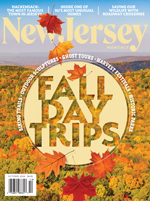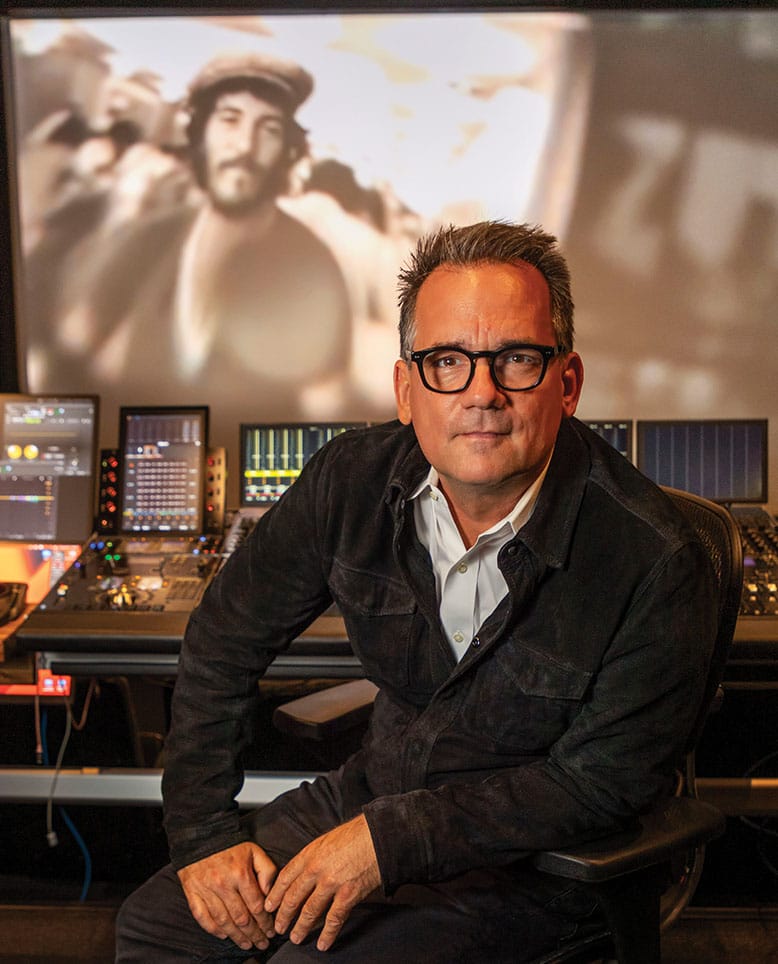
Point Pleasant native Thom Zimny has been working on films with Bruce Springsteen for nearly a quarter century. Photo: Erin Patrice O’Brien
Thom Zimny’s phone rang in the winter of 2022. Bruce Springsteen was getting the E Street Band back together to tour after a six-year hiatus, and he wanted to capture the rehearsals for a fledgling new film.
“You always wait for that call,” says Zimny, 59, an Emmy- and Grammy-winning film director/editor who has worked with Springsteen for the past 24 years—most recently on Springsteen on Broadway for Netflix (2018), Western Stars (2019) and Letter to You (2020).
The project would become Road Diary: Bruce Springsteen and the E Street Band, a close collaboration among Zimny, who directed, and Springsteen and his longtime manager, Jon Landau, who both served as producers.
The documentary premiered at the Toronto International Film Festival last month and is now streaming on Disney+ and Hulu. It “takes the full measure of a man and a band grappling with mortality on a concert stage,” Steve Pond wrote in a review for TheWrap.
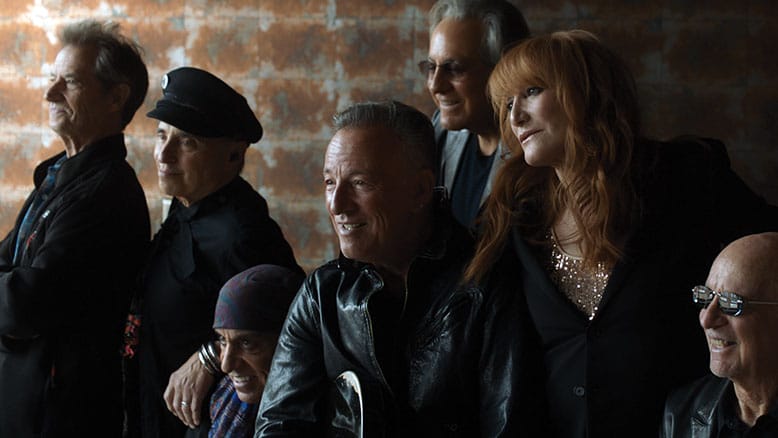
The E Street Band’s longest-playing members, from left: Garry Tallent, Nils Lofgren, Steve Van Zandt, Bruce Springsteen, Max Weinberg, Patti Scialfa and Roy Bittan. Photo: Courtesy of Disney/Hulu
The band’s first rehearsals began in “sleepy” Red Bank, at the Vogel (part of the Count Basie Center for the Arts) in the early days of the pandemic’s end, says Zimny, a Point Pleasant native. The January streets were gray; the traffic lights were flashing. “I remember thinking, This is a perfect place to start,” he recalls, “because it could contrast when you get to the place of Bruce celebrating this music, being out with a crowd, in the light, in the sunshine.” (Though one of the fans who braved the weather to catch stifled snippets outside the Vogel jubilantly told the Asbury Park Press at the time, “I don’t feel the cold.”)
While Zimny entered the project without a rigid vision—“We live with the film as if it’s a person in our lives,” he says of his process with Springsteen and Landau—he quickly realized that its arc was already unfolding in the rehearsals. Springsteen was honing a carefully crafted setlist reflecting not only his past, but also a sharp awareness of where he was and is “in the moment.”
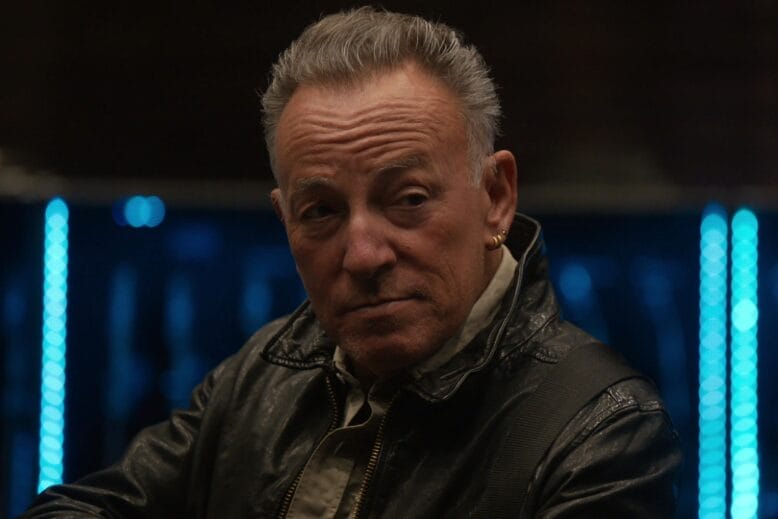
Bruce Springsteen in Road Diary. Photo: Courtesy of Disney/Hulu
Those songs on the 2023-24 tour, anchored by several tracks on Springsteen’s 2020 album, Letter to You, are “interlocked by a certain defiance and a certain urgency….connected to feeling the pressure of time and approaching death,” Landau says in the film. “The subtext is about living your life right now.”
In a similar spirit, Springsteen was “not interested that much” in the rehearsals, despite the fact that the band was out of practice, Zimny recalls. “He was hungry for an audience and wanted to keep some of the energy of the raw element.”
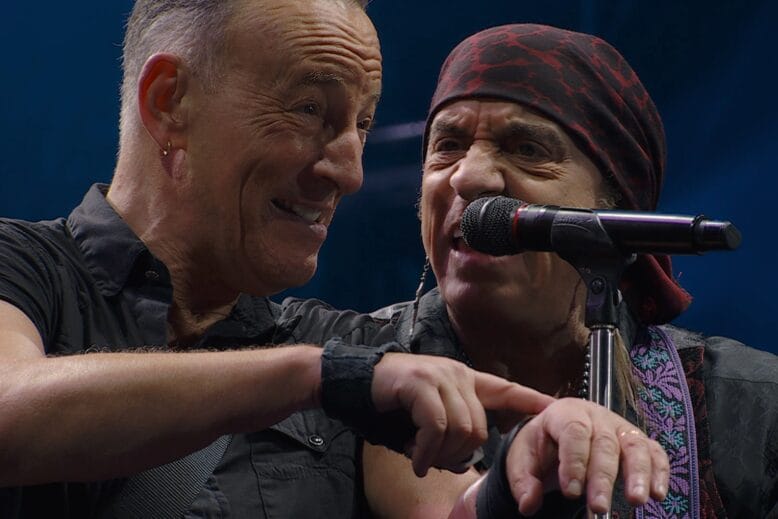
Springsteen onstage with Steve Van Zandt. Photo: Courtesy of Disney/Hulu
Road Diary follows the band from Red Bank to their tour’s opening night in Tampa, Florida, and across America and Europe in 2023 and 2024—fusing intimate, behind-the-scenes moments with live performances, archival footage, and interviews with fans and bandmates. Springsteen’s wife, band member Patti Scialfa, also reveals a multiple-myeloma diagnosis. “I’ve been able to be around for 24 years, and she gave me the trust to share what she shares,” Zimny says. (Scialfa gave a rare 2024 performance last month at Asbury Park’s Sea Hear Now festival, the last stop on the tour’s U.S. leg, singing a duet with Springsteen of “Tougher Than the Rest.”)
Part of Zimny’s dialogue with Landau and Springsteen was, “Can we tap into the emotional quality of the audience? Can it go beyond just the cliché of a concert film?” he says. “If you’ve experienced a Bruce Springsteen concert, you just know that, in the middle of it, there’s this cathartic, unexplainable thing that happens. People change.”
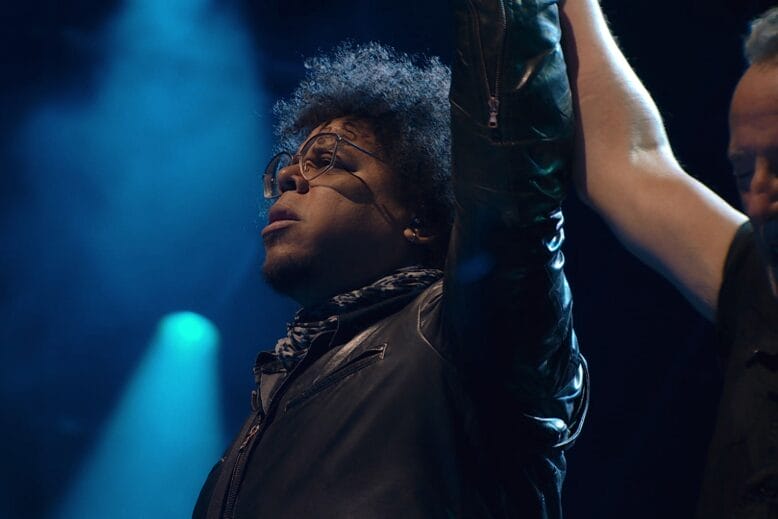
Jake Clemons, the E Street Band’s saxophonist, onstage with Springsteen. Photo: Courtesy of Disney/Hulu
[RELATED: E Street Band’s Jake Clemons Talks Stone Pony, Pre-Show Rituals and the Supernatural]
At dozens of shows around the globe, Zimny “chased” that catharsis and communion, which was heightened following Covid-19. The band’s reunion and palpable “healing” with their audience was “a very cinematic” lens to film through, he says. “You feel that giant sense of gratitude and connection.”
Making Road Diary was a “very emotional process” that went to places “I never imagined,” Zimny says. He hopes it echoes many of the same tones that color Springsteen’s setlist—moments of reflection and loss alongside “pure humor and E Street madness”—and that viewers can emerge from the film feeling like they’ve “stepped into this world,” with a clearer understanding of themselves and their journey.
Zimny grew up in lower-middle-class Point Pleasant, where, struggling with dyslexia, he found refuge in images and sounds. He’d record the audio of old Hollywood movies that aired on Channel 9—“I was obsessed with the film Angels with Dirty Faces,” a 1938 crime drama about a priest and a gangster—on his cassette player and then listen back, often at the beach. “What I was really doing was building a visual language in my mind,” he says.
At his childhood cinema, the Arnold Theatre, blockbuster films arrived after national runs as “tired old prints, all beaten-up,” Zimny recalls fondly. “You finally got to see Jaws—after everyone else saw it. It almost felt like you were reliving a memory.” Still, he refers to the Arnold as “a palace of stories and adventures,” and says his nostalgia for those grainy projections has seeped into many of his Springsteen films.
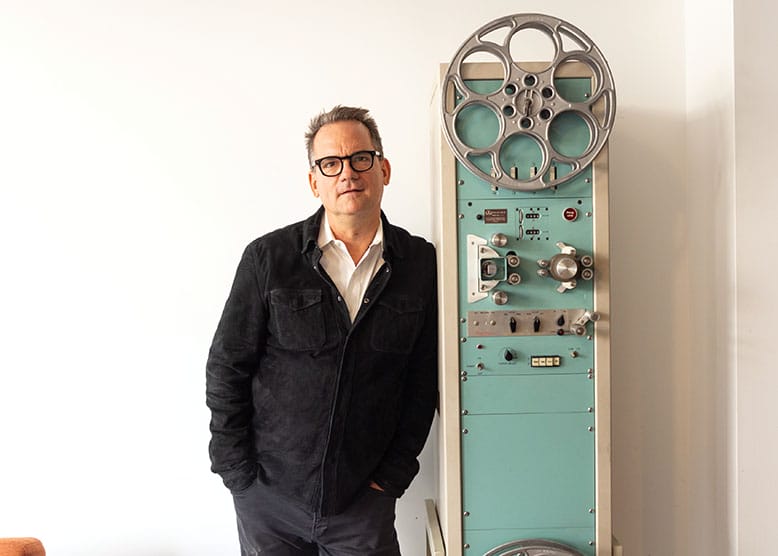
Photo: Erin Patrice O’Brien
As a teen, Zimny discovered his older brother’s Darkness on the Edge of Town vinyl. He was drawn to the typewriter font on the cover and, upon listening, bowled over by the song “Factory.” He recalls, “It just hit me so hard, because his writing reflected the household I grew up in. I could see the disappointment of my father and hear the frustration of my brothers and myself. This was a story that I could look across the kitchen table and recognize.”
And at Point Pleasant Borough High School, someone had scrawled out in full the lyrics of “Born to Run” on a desk. “The girls comb their hair” caught Zimny’s eye (“an amazing detail—and how real it was”) and stirred him to “dream up a world” even before he later heard the song for the first time via “the power” of a car radio.
“You don’t go far from some of these early influences,” he says. “You might see a fan’s face in Europe and say, Oh, my God, I totally see myself in that moment. Or you just might hear a song and have such a deep emotional connection, going, I heard that in a parking lot outside the beach in a Jersey town, and now I’m standing before this huge crowd in Barcelona, and they’re singing it back to [me]. My goal is always: How do I translate that into the film?”
Zimny splits his time these days between Brooklyn and Los Angeles residences, but visits the Jersey Shore, where he still has family and friends, “every other weekend.” When a film is “in a problematic state, there’s nothing better than to take that drive,” he says. “It’s an instant reboot, but it’s also an artistic connection: the sounds of the boardwalk or the ocean, or the melancholy of September. For all my Bruce films, I’ve returned with a camera to chase those landscapes and visuals that are both in the music and my memories.”

Photo: Erin Patrice O’Brien
Zimny began working with Springsteen in 2000. When an editor whom Springsteen’s team had in mind for a project was unavailable, a colleague floated Zimny’s name, saying, “He grew up in Jersey and likes Bruce.”
“It was this very surreal thing, of having been in the very cheap seats one night watching Springsteen in concert, and then two days later, [editing its footage],” Zimny recalls. He won an Emmy for the resulting HBO film, Bruce Springsteen & The E Street Band: Live in New York City.
He waited five years before even mentioning to Springsteen that he, too, was a Garden State native. “I took it very serious, and I still do,” he says of the job. “I felt like I had this great opportunity and gift before me.”
Springsteen has likewise been generous in his praise of Zimny over the years. “Thom…is as talented, dedicated, and patient as they come,” he wrote in the liner notes of his 2010 album, The Promise.
Following Road Diary‘s Manhattan premiere on October 15, during an onstage conversation with Zimny, Landau and Steve Van Zandt, Springsteen christened Zimny “the 20th E Street Band member” and thanked him. “Your gift to me of that visual language has been so inspiring,” Springsteen said, touching his hand to his heart.
“I didn’t want [Road Diary] to be a typical concert film,” Zimny says. “I wanted to tap into something that I can never really verbally explain, which is the beauty of Bruce’s music, live, with a bunch of strangers, and that magical thing that happens.”
[RELATED: She’s the One: Meet Eileen Chapman, Director of the Bruce Springsteen Archives]
No one knows New Jersey like we do. Sign up for one of our free newsletters here. Want a print magazine mailed to you? Purchase an issue from our online store.
